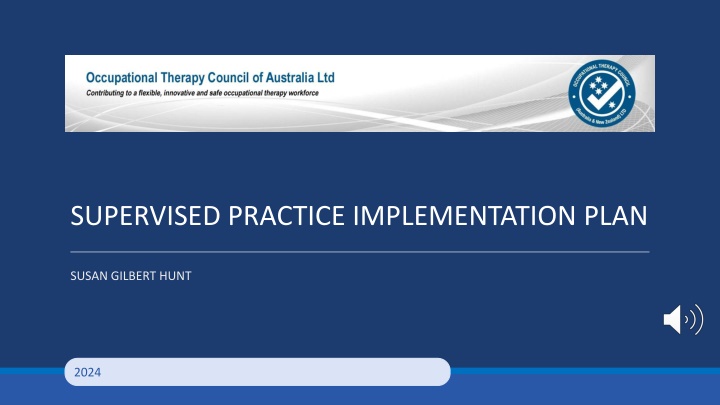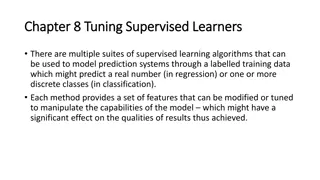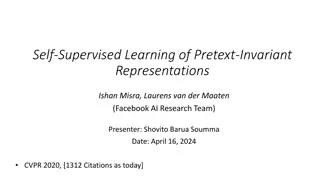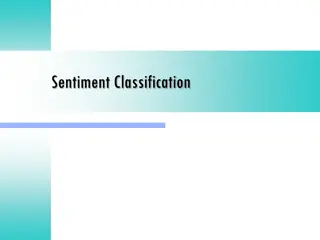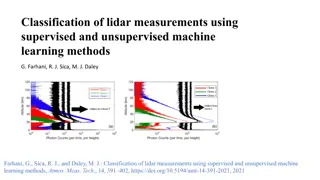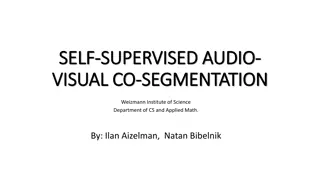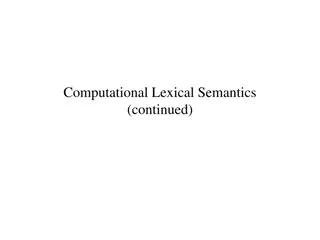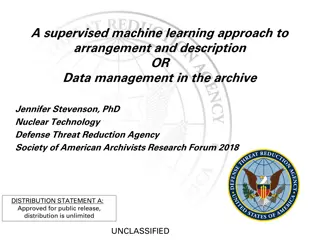SUPERVISED PRACTICE IMPLEMENTATION PLAN
This presentation outlines the Supervised Practice Implementation Plan by Susan Gilbert-Hunt for occupational therapists. It covers the purpose, process overview, starting the process, and preparing for the SPIP. The plan includes finding a suitable workplace, developing effective actions, maintaining a supervision log, and submitting midway and final reports. Cultural diversity, policies, legislation, and professional development are key aspects highlighted.
Download Presentation

Please find below an Image/Link to download the presentation.
The content on the website is provided AS IS for your information and personal use only. It may not be sold, licensed, or shared on other websites without obtaining consent from the author.If you encounter any issues during the download, it is possible that the publisher has removed the file from their server.
You are allowed to download the files provided on this website for personal or commercial use, subject to the condition that they are used lawfully. All files are the property of their respective owners.
The content on the website is provided AS IS for your information and personal use only. It may not be sold, licensed, or shared on other websites without obtaining consent from the author.
E N D
Presentation Transcript
SUPERVISED PRACTICE IMPLEMENTATION PLAN SUSAN GILBERT HUNT 2024
PURPOSE OF PRESENTATION Clarify the purpose and requirements of the Supervised Practice Implementation Plan Provide instructions on how to: develop effective actions develop appropriate measures write your reflections for midway and final reports maintain your supervision log.
Qualified occupational therapist Experienced therapist Australian differences Policies Legislation Cultural diversity and responsiveness This Photo by Unknown Author is licensed under CC BY-SA
OVERVIEW OF PROCESS 6 months Find suitable position Midway and Final reports Stage 1 Stage 2 Desktop assessment. Find a suitable position. Within two weeks of commencing in your position submit the SPIP with Stage 2 application and supporting documents. At completion of three months (based on full- time) submit midway report and supervision log. Access to IAHA cultural training Levels 1 and 2. Limited registration with Ahpra. Complete Levels 1 and 2 IAHA cultural training. Review and feedback. SPIP reviewed. Final report submitted in accordance with assessor feedback. Undertake proposed actions. Ensure observation of practice. Use the Step by step process for internationally qualified practitioners guide available in the assessment section of the Occupational Therapy Council of Australia website.
STARTING THE PROCESS Find suitable workplace Midway and Final Reports Stage 1 Stage 2 Desktop assessment. Find a suitable position. Within two weeks of commencing in the position, submit SPIP with Stage 2 application and supporting documents. At completion of three months (based on full-time) submit midway report and supervision log. Access to IAHA cultural training Levels 1 and 2. Limited registration with Ahpra. Complete Levels 1 and 2 IAHA cultural training. Review and feedback. Final report submitted in accordance with assessor feedback. SPIP reviewed. Undertake proposed actions. Ensure observation of practice. Use the Step by step process for internationally qualified practitioners guide available in the assessment section of the Occupational Therapy Council of Australia website.
PREPARING FOR THE SPIP Find suitable workplace Midway & Final Reports Stage 1 Stage 2 Find a suitable position. Desktop assessment. Within two weeks of commencing in the position, submit SPIP with Stage 2 application and supporting documents. At completion of three months (based on full-time) submit midway report and supervision log. Access to IAHA cultural training Levels 1 and 2. Limited registration with Ahpra. Complete Levels 1 and 2 IAHA cultural training. Review and feedback. Final report submitted in accordance with assessor feedback. SPIP reviewed. Undertake proposed actions. Ensure observation of practice. Use the Step by step process for internationally qualified practitioners guide available in the assessment section of the Occupational Therapy Council of Australia website.
COMMENCING THE SPIP Find suitable workplace Midway & Final Reports Stage 1 Stage 2 Desktop assessment. Find a suitable position. Within two weeks of commencing in the position, submit SPIP with Stage 2 application and supporting documents. At completion of three months (based on full-time) submit midway report and supervision log. Access to IAHA cultural training Levels 1 and 2. Limited registration with Ahpra. Complete Levels 1 and 2 IAHA cultural training. Review and feedback. Final report submitted in accordance with assessor feedback. SPIP reviewed. Undertake proposed actions. Ensure observation of practice. Use the Step by step process for internationally qualified practitioners guide available on Occupational Therapy Council Australia website in the Assessment Section
REPORTING PROCESS Find suitable workplace Midway & Final Reports Stage 1 Stage 2 Desktop assessment. Find a suitable position. Within two weeks of commencing in the position, submit SPIP with Stage 2 application and supporting documents. At completion of three months (based on full-time) submit midway report and supervision log. Access to IAHA cultural training Levels 1 and 2. Limited registration with Ahpra. Complete Levels 1 and 2 IAHA cultural training. Review and feedback. Final report submitted in accordance with assessor feedback. SPIP reviewed. Undertake proposed actions. Ensure observation of practice. Use the Step by step process for internationally qualified practitioners guide available in the assessment section of the Occupational Therapy Council of Australia website.
STAGE 2 ASSESSMENT FOR OVERSEAS-TRAINED OCCUPATIONAL THERAPISTS TEMPLATE FOR SUPERVISED PRACTICE IMPLEMENTATION PLAN (SPIP) and MIDWAY PROGRESS AND FINAL REPORT For each professional behaviour you must identify all the actions/ activities you will undertake to achieve/ evidence the professional behaviour. Please ensure you indicate how direct observation of your practice will be undertaken by your supervisor, in both assessment and intervention.
FOUR COMPETENCY STANDARDS Practise in an ethical, safe, lawful, and accountable manner. Professionalism Knowledge, skills and behaviours informed by relevant and contemporary theory, practice knowledge and evidence, and are maintained by ongoing CPD. Knowledge and learning Practise acknowledges the relationship between health, wellbeing and human occupation. Practise is client centred for individuals, groups, communities and populations. Occupational therapy process and practice Practise with open, responsive and appropriate communication to maximise the occupational performance and engagement of clients and others. Communication
DEVELOPING ACTION STATEMENTS For each professional behaviour check: Focus of competency standard. Core behaviour. The verbs or action statement. All the stated elements.
Competency Standard 1: Professionalism 1.4 Recognises and manages conflicts of interest in all client and professional relationships.
VERBS 1.4 Recognises and manages conflicts of interest in all client and professional relationships. ELEMENTS
Act LAW Regulations and mandatory standards 1.8 Adheres to all work health and safety, and quality requirements for practice. Code of Practice and non-mandatory standards Australian Standards Industry standards and guidelines
1. Complete workplace site orientation program including WHS, infection control and manual handling competencies. 2. Review Work Health & Safety Act (WHS). 3. Discuss understanding of WHS Act and reporting process in supervision. 4. Review Aged Care Quality Standards and discuss implications/influence on practice in supervision. 5. Reflect on application of WHS and quality standards and share reflections with supervisor during supervision. 1.8 Adheres to all work health and safety, and quality requirements for practice.
DEVELOPING APPROPRIATE MEASURES For each action consider how will anyone know you have completed it. What will be observed? The measures should evidence the actions you have completed and the extent to which you have demonstrated the professional behaviour.
Action Measure 1. Complete workplace induction including WHS, infection control & manual handling competencies. Review Work Health & Safety Act. Discuss understanding of WHS Act & reporting process in supervision. Review Aged Care Quality Standards and discuss implications to practice in supervision. Reflect on application of WHS and quality standards and share reflections with supervisor during supervision. 1. Completion of workplace induction. All online modules completed and uploaded Understanding and application of WHS evidenced in supervision discussions and practice. Application of Aged Care Quality Standards through discussion & observed in practice and by supervisor. Supervisor deems competent based on above. 2. 2. LINKING ACTIONS AND MEASURES 3. 3. 4. 4. 5.
CULTURAL AWARENESS AND RESPONSIVENESS Professionalism Knowledge & Learning OT process & practice Communication 1.5 practises in a culturally responsive and culturally safe manner, with respect to culturally diverse client groups 2.4 understands and responds to Aboriginal and Torres Strait Islander health philosophies, leadership, research and practices 3.5 selects and implements culturally responsive and safe practice strategies to suit the occupational therapy goals and environment of the client. 4.3 works ethically with Aboriginal and Torres Strait Islander communities & organisations to understand and incorporate relevant cultural protocols and communication strategies, with the aim of working to support self- governance in communities 1.6 incorporates and responds to historical political cultural, societal, environmental and economic factors influencing health, wellbeing and occupations of Aboriginal and Torres Strait Islander Peoples 2.5 maintains current knowledge for cultural responsiveness to all groups in the practice setting 3.6 understand and incorporate Aboriginal and Torres Strait Islander People s experience of health, wellbeing and occupations encompassing cultural connections. 4.5 uses culturally responsive, safe and relevant communication tools and strategies 1.9 identifies and manages the influence of his/her values and culture on practice
TIPS FOR CHECKING YOUR ACTIONS AND MEASURES Are your actions really actions? Are your measures observable? Have you identified in your actions when/how your supervisor will observe your practice both assessment and intervention? You need to have four sessions of practice observation in first six weeks and a further two prior to submission of your midway report. Do you have different strategies/actions for cultural responsiveness across the competencies?
REVIEW OF THE SPIP Your SPIP will be reviewed by two assessors to determine whether the proposed actions will provide you with opportunity to demonstrate the competencies. You may need to undertake some revisions to ensure you have a solid plan. If required, you may be offered an opportunity to discuss your plan to enable you to undertake the revisions. This does not necessarily impact on your ability to progress with your SPIP.
REFLECTIONS AND REPORTS Develop a regular, at least weekly, reflection time to write up what you have done/learnt from undertaking your actions. This should not be a reiteration of your actions. When you have undertaken all the proposed actions, you and your supervisor can sign off that they have been completed. You do not need to have completed everything when submitting your midway report. Supervisor also provides overall commentary on your progress.
SUPERVISION LOG Date/ Duration Type of Supervision Behaviour/s discussed Discussion summary Action who, what, when Sign Complete your supervision log incrementally. Discussion with Supervisor to plan for assessment with client X. Reviewed assessment tools to be used. Supervisor observe assessment and provided feedback. Need to further develop goals with client X. 13.2.24 4hrs F2F DPO 3.1 3.2 3.4 Ideally immediately following or as part of your supervision session.
FINAL WORDS Remember you already know how to practise as an occupational therapist. This process is about demonstrating you understand and can comply with the competency standards required of all registered occupational therapists in Australia. All the documents you submit should be unique to you as they are informed by your practice knowledge and experiences. Your supervisor is there to support and guide you and the Occupational Therapy Council of Australia is here too. We want to support you in becoming a great Australian occupational therapist.
